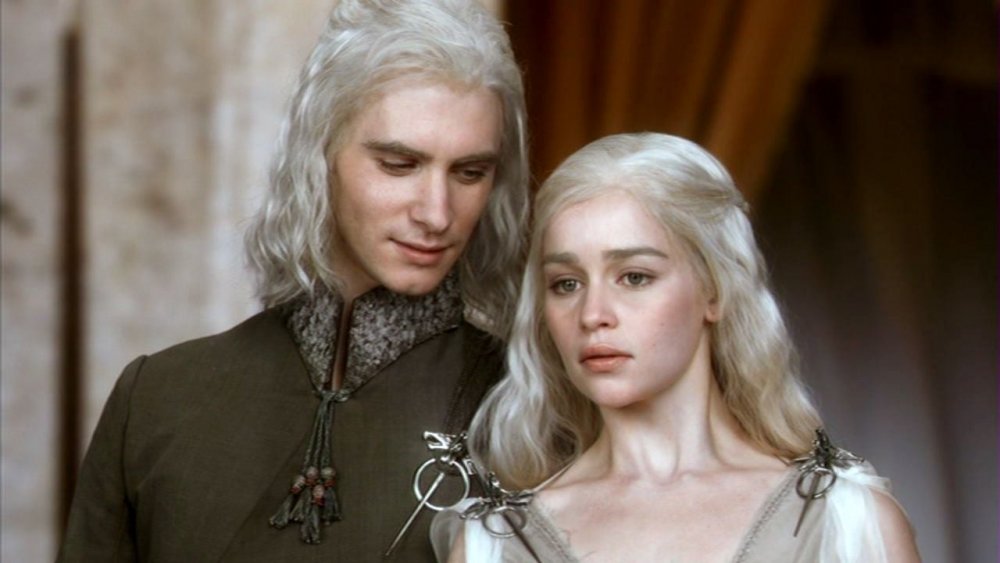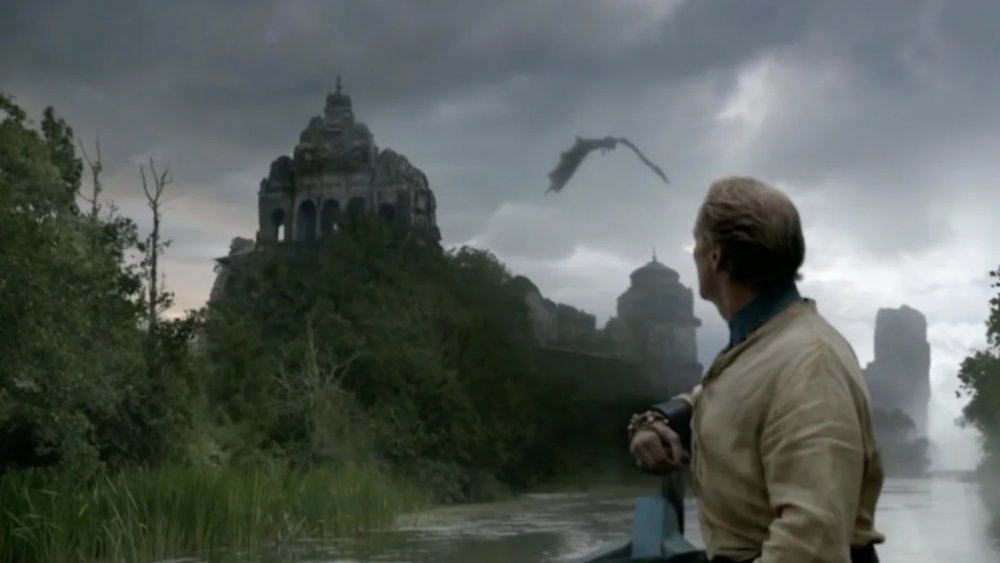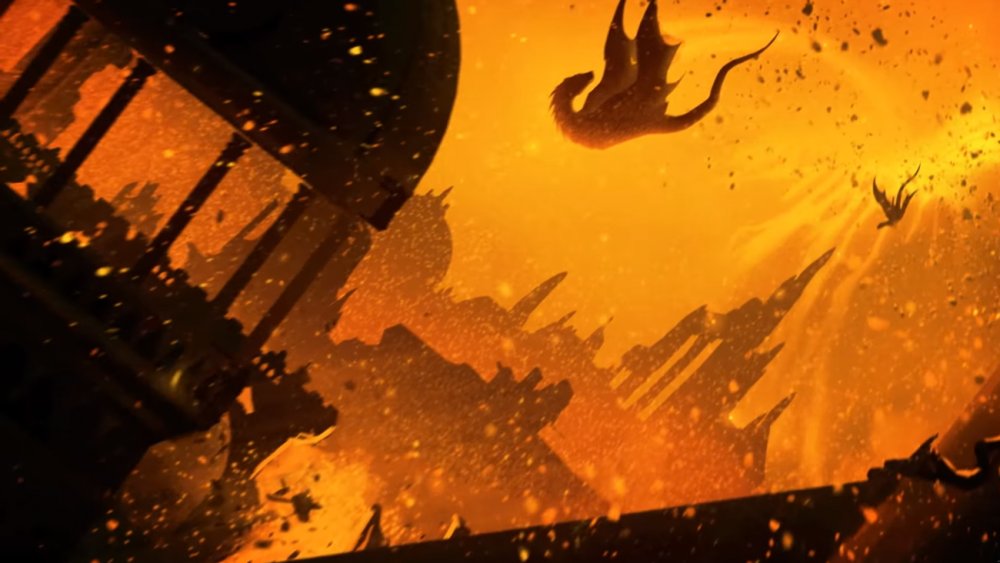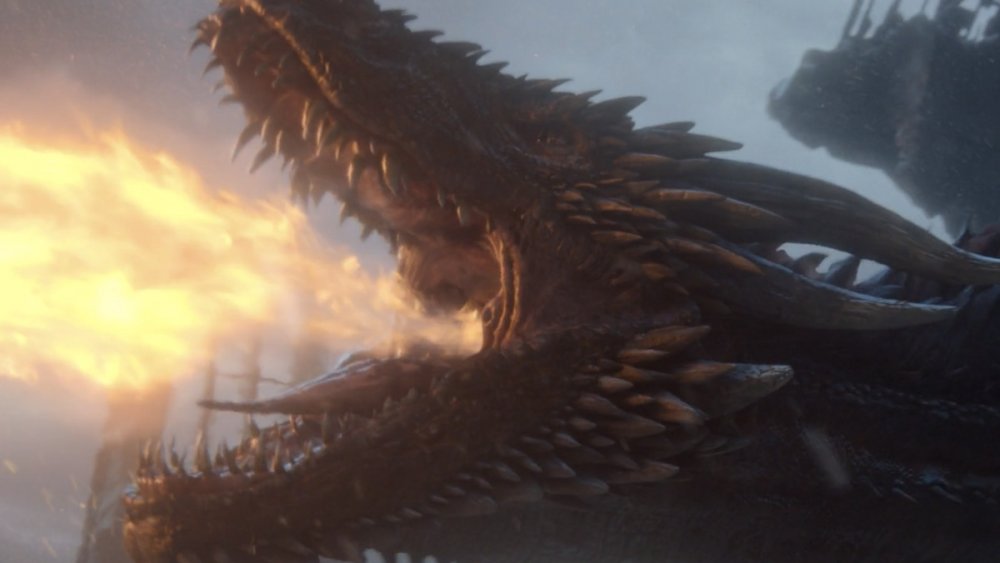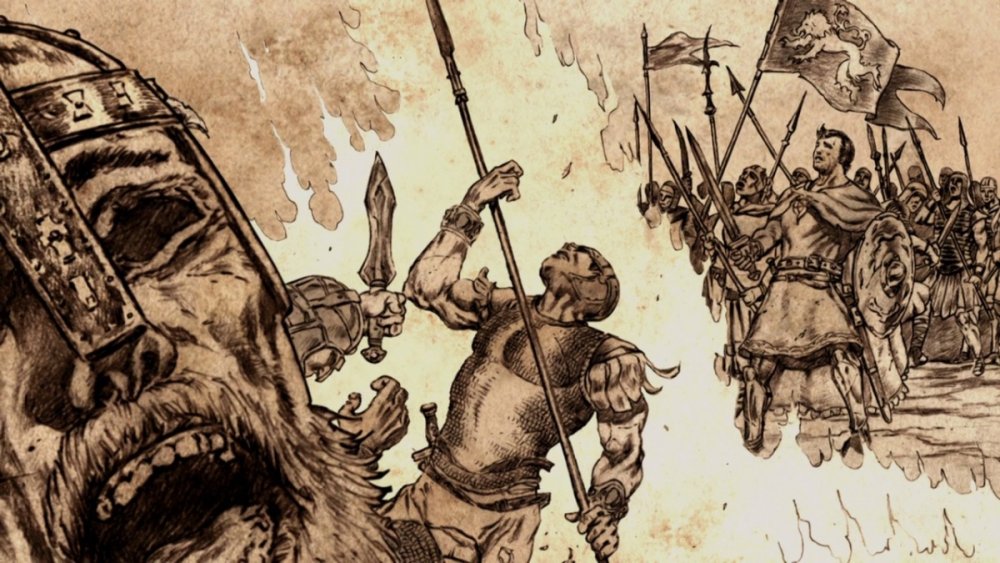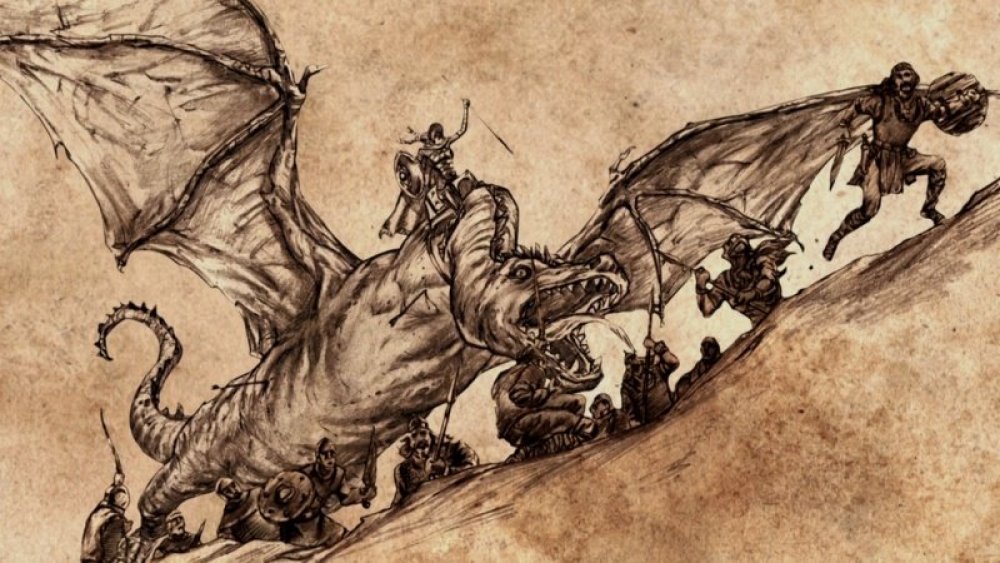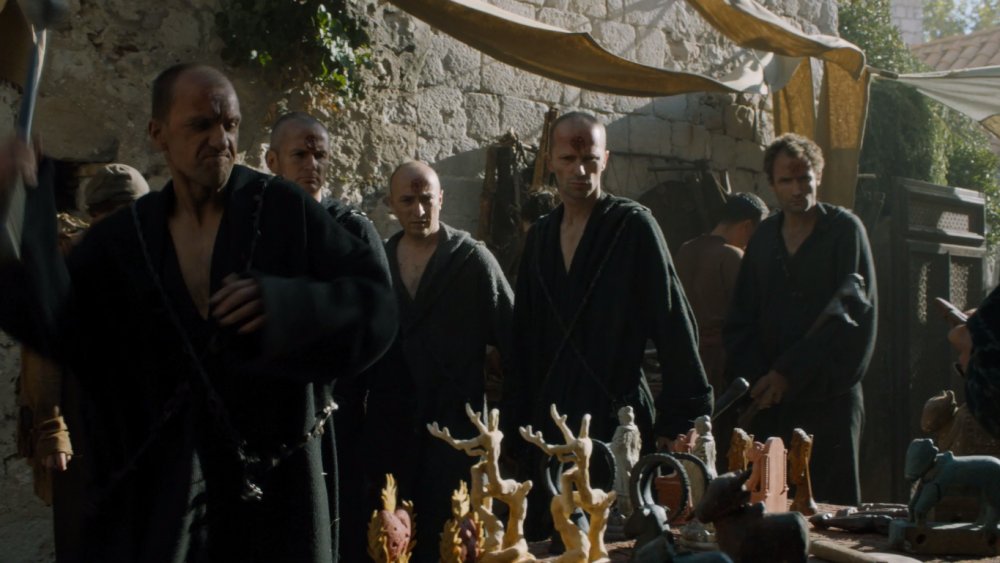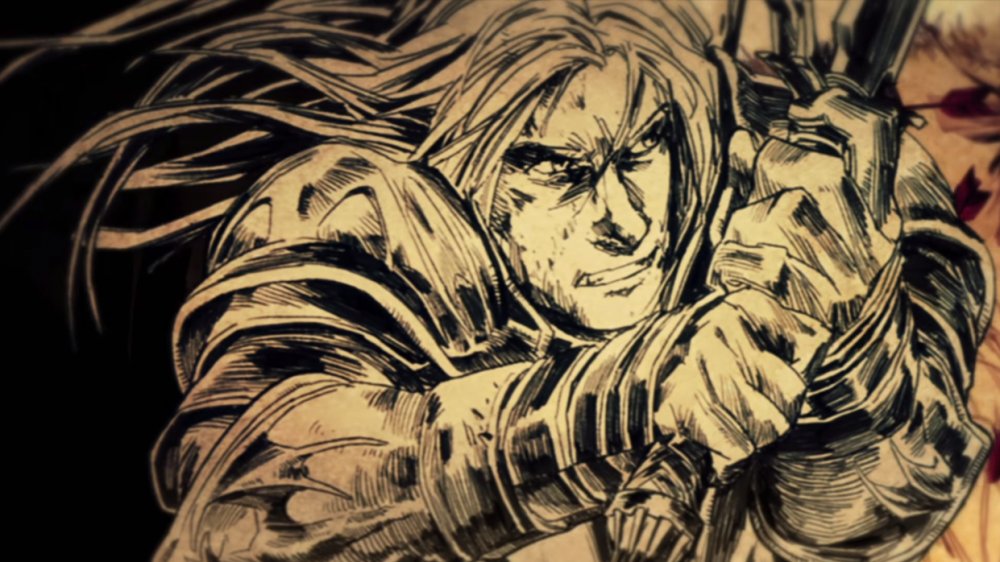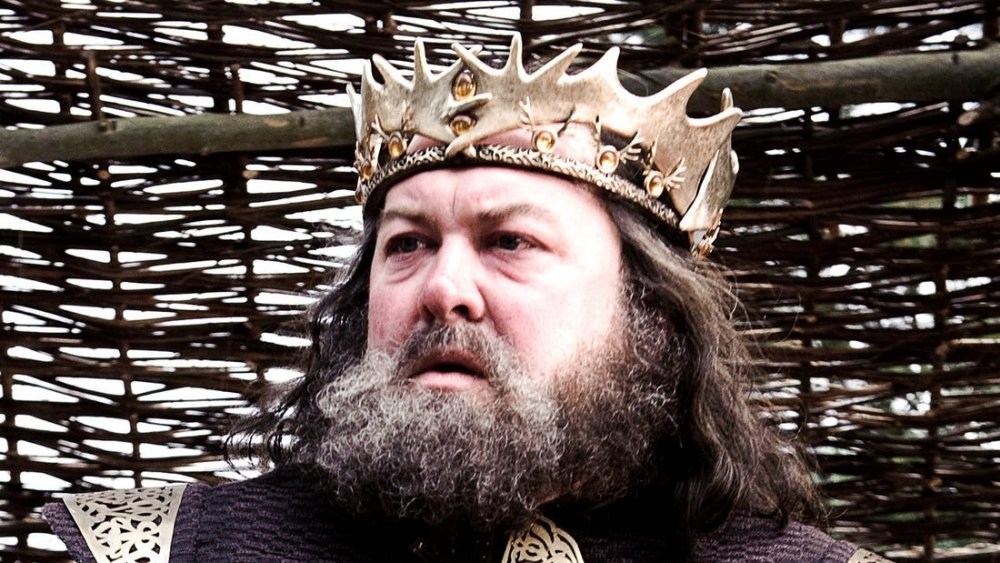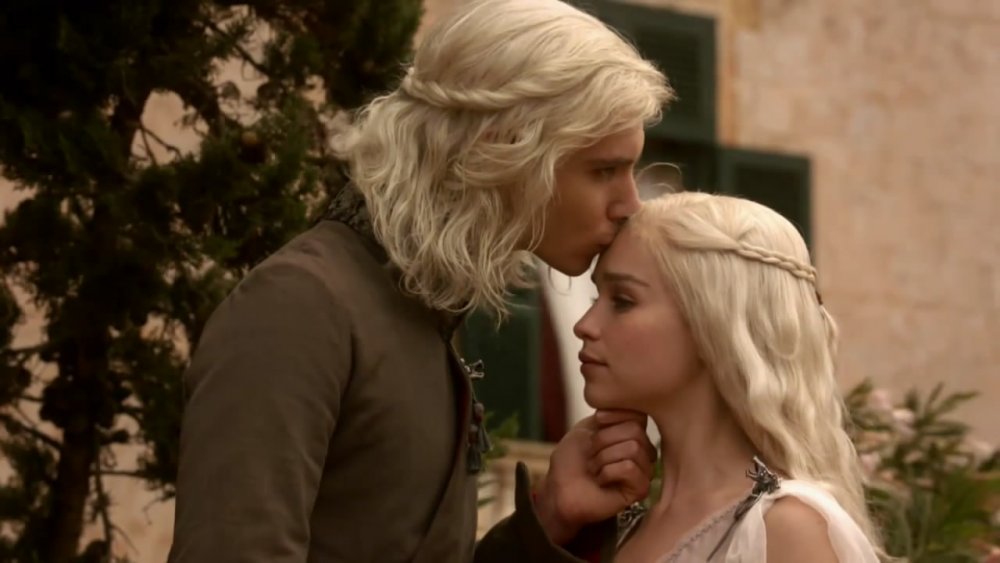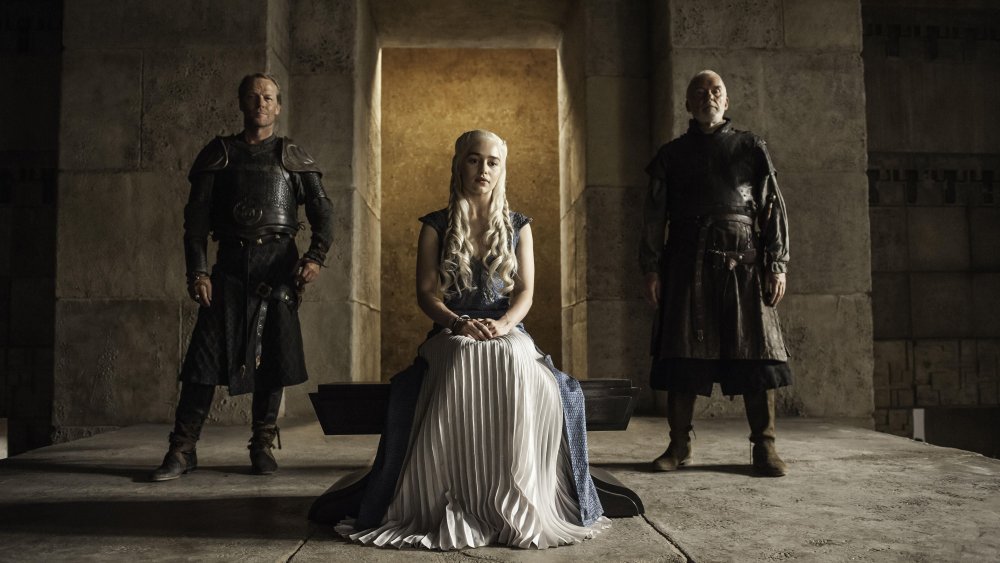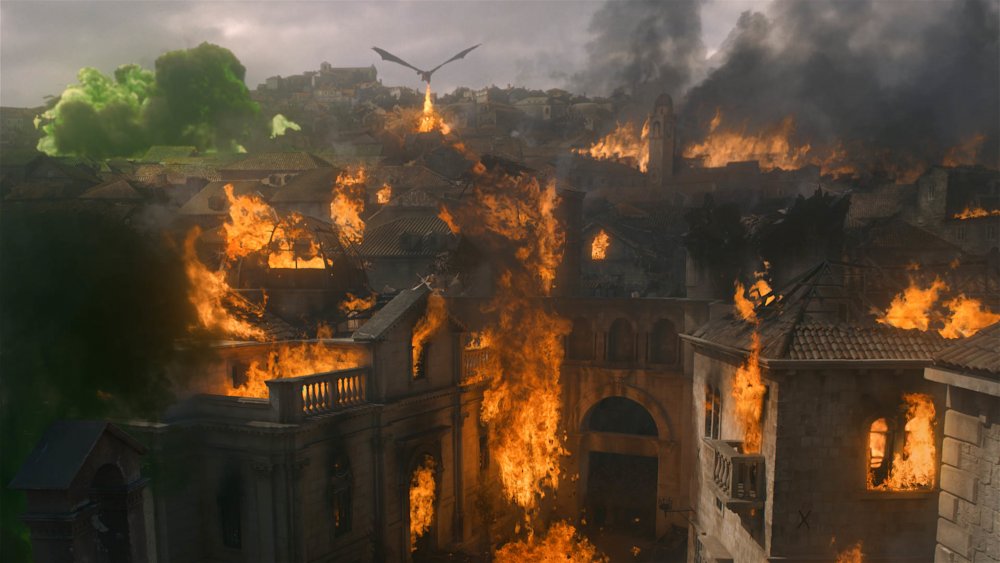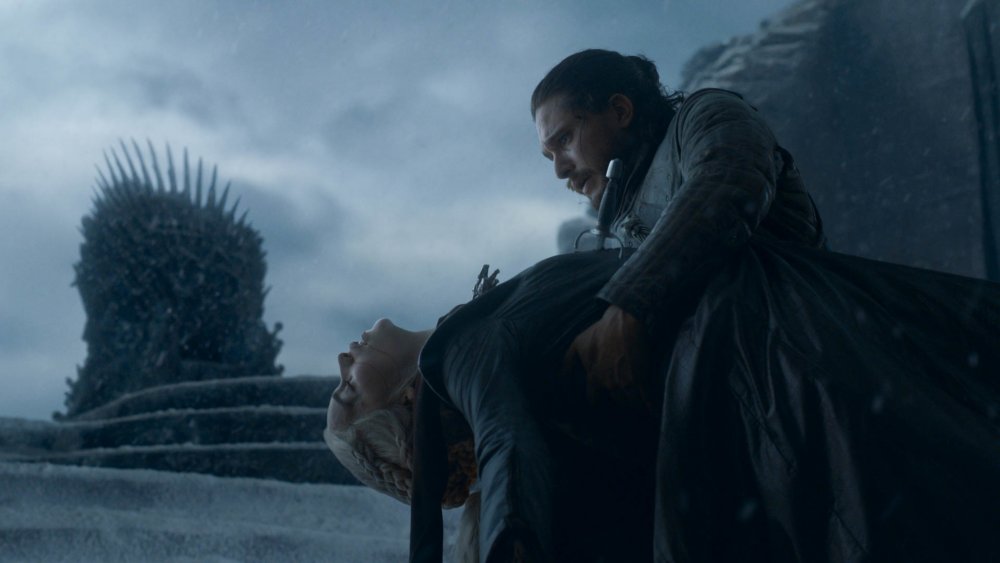The Entire House Targaryen Timeline Explained
The world of Game of Thrones runs on family history. Ancestors who lived thousands of years prior are constantly invoked. Palatial estates are handed down, added to, and sometimes, if a war does not go well, surrendered to another house. Failing to keep up appearances at banquets, tourneys, and balls can turn into an existential crisis. It's basically Cape Cod, but with dragons and direwolves.
But one Westerosi family broke the cycle of endless face-saving. Once upon a time, the Targaryens were the nouveau riche of Game of Thrones' central continent — but where most strivers fail, they succeeded by sticking to their cultural guns, keeping to themselves, and maintaining their unique link with some of the last dragons on the planet. Their mystique grew, their coffers swelled, and their control of the Iron Throne lasted for centuries. But nothing lasts forever, not even the reign of the Targaryens. Many factors led to the downfall of this great house, and we're here to examine them. This is the story of the Targaryens, from the fires of old Valyria to the legacy of the Breaker of Chains.
Old Valyria
The Targaryens are one of the last surviving noble families of Old Valyria. At its height, the Valyrian Freehold stretched across most of the eastern continent of Essos, and even crossed the Narrow Sea to the island of Dragonstone, located in the mouth of Westeros' Blackwater Bay. The Valyrians were able to conquer so much land because they had the ability to tame and control dragons. Valyrians claimed to be descendants of shepherds, who discovered dragons living inside Valyrian volcanoes. They tamed the great beasts, and fueled their rise to power with their mighty flame. Dragons made them formidable on the battlefield and allowed them to forge what would come to be known as Valyrian steel, in addition to remarkably advanced roads.
Several groups in Essos fought against Valyrian expansion. The Ghiscari attacked Valyria several times to stop their spread, to little effect. Eventually, the Valyrians marched on their capital of Old Ghis, burning it to the ground and sowing the fields with salt. The Rhoynar fled Essos altogether, landing in Westeros and eventually becoming the Dornish. The Andals, who would go on to make up the dominant ethnic group of Westeros, chose exodus as well. Old Valyria shaped the world far beyond its own vast borders, to the point of defining Westeros long before they actually conquered it, via the Targaryens.
Doom comes for Valyria
The Valyrian dragonlords thrived for centuries, until an event known as the Doom of Valyria smashed the Freehold apart. A mysterious cataclysm involving the eruption of multiple volcanoes, the Doom literally and figuratively fractured the empire. Knowledge of magic, technology, and history vanished into the flames, and the Valyrian peninsula was split into islands, with the Smoking Sea between them. The Targaryens, having left their ancestral home 12 years prior due to the prophetic dreams of Daenys Targaryen, were one of a handful of families who survived the Doom. They settled on Dragonstone, the westernmost point of the former Valyrian empire.
The lands that had comprised the Freehold fell into chaos in the aftermath of the Doom. Former Valyrian colonies struggled for power, and external nation-states attempted to fill the Valyrian vacuum. On Dragonstone, the Targaryens suffered: Four of their five dragons died during this chaotic period. This era of cruelty, murder, and war became known as the Century of Blood.
Dragonstone and Volantis
In the aftermath of the Doom, the city of Volantis, formerly a Valyrian colony, attempted to take control of many former Valyrian strongholds. When the cities of Pentos and Tyrosh, also former Valyrian colonies, reached out to the Targaryens for help, young Aegon Targaryen flew across the Narrow Sea and set the entire Volantene fleet on fire.
Lord Aegon had no interest in reconquering the lands of the Valyrian Freehold, however. It had been over 100 years since his family fled that great empire, and while familial pride can lead to endless wars in the world of Game of Thrones, Aegon himself had no real ties to his ancestral origins. Instead, he began working on a plan to conquer the continent that lay directly to the west of his family's small island. He wanted to unite the separate kingdoms of Westeros into one massive nation, ruled by the Targaryens. He commissioned a large table, painted with a map of Westeros, and set about planning a full scale invasion from his tiny seat at Dragonstone.
Aegon's Conquest begins
Aegon Targaryen invaded Westeros with a small force that quickly grew as he racked up victories. His conquest began reshaping Westeros from its earliest moments: The fort built at Aegon's landing site became King's Landing, the Westerosi seat of power. With the help of his sister-wives, Rhaenys and Visenya, Aegon marched westward. He slaughtered the Hoares, the ruling family of the Iron Islands and the riverlands, in the massacre that ruined Harrenhal and gave it its haunted reputation. He then took the stormlands with the help of Orys Baratheon, then made Baratheon lord of the conquered region.
Seeing the way the conquest was going, the western kings of Westeros banded together to meet Aegon's threat. The Host of the Two Kings, comprised of House Lannister and House Gardener's forces, seemed to stand a good chance of overwhelming Aegon's comparatively small army. When the battle began to turn against the Targaryens, however, Aegon did something unprecedented: He unleashed the might of all three Targaryen dragons at once. The Gardener line was ended as they burned alive, but much of House Lannister was able to escape the battle, which became known as the Field of Fire. Lord Loren Lannister was captured by Aegon the next day, to whom he finally admitted defeat. For his submission, Aegon named him Warden of the West.
The king on the Iron Throne
Aegon's power spread across the continent. The Tyrells yielded Highgarden, which they were overseeing for the now extinct House Gardener. For submitting, they were given control of the verdant region known as the Reach. Westeros' largest and most inhospitable kingdom, the North, might have proved more difficult for the Targaryens to overtake — but King Torrhen Stark, well aware of the dragonlord's might, chose to submit to Aegon without a fight. Though he had an impressive army on his side, the Field of Fire had made it clear that this did not ensure victory against Aegon and his sisters' dragons. Lord Stark was named Warden of the North.
Dorne, the southernmost region of Westeros, did not fight the Targaryens. Their noble families hid in the dunes and mountains of their lands at the dragons' approach, offering a warning to the invading Rhaenys Targaryen via their elderly princess, Meria Martell, who stayed behind: "You may burn us, my lady, but you will not bend us, break us, or make us bow. This is Dorne. You are not wanted here. Return at your peril." Dorne remained unconquered. Aegon proceeded to Oldtown, where he was met with immediate surrender. The High Septon anointed him three days later as Aegon Targaryen, the First of His Name, King of the Andals, the Rhoynar, and the First Men, Lord of the Seven Kingdoms, and Protector of the Realm.
Stubborn Dorne
The first century of Targaryen rule was not without conflict. Aegon began the first major war of his reign four years after his coronation, when he set out to conquer Dorne. But the Dornish people disappeared into the dunes every time the Targaryens rode in on their dragons. Nearly all of Dorne's castles were burned at one point, but their inhabitants survived.
The Targaryens initially installed their own vassals in the empty castles, only to have all of their representatives be run out or murdered by the returning Dornishmen. Dorne led a few advances into Aegon's territory, burning southern towns before retreating. The greatest loss suffered by the Targaryens came when Dornish soldiers killed Meraxes, Rhaenys' dragon, whose plummet from the sky resulted in his mistress' death as well. The grieving Targaryens responded by burning castles in Dorne indiscriminately, to little effect.
The war came to an end when a Dornish emissary traveled to King's Landing, carrying a letter from the Prince of Dorne and the skull of Meraxes. Aegon's advisors viewed the skull as an insult and urged him to counter with more bloodshed. However, Aegon opted to end the war after reading the letter. The note from the Dornish prince was burned immediately, and no one beyond the sender and Aegon ever learned of its contents.
A series of uprisings
Aegon died 37 years after his conquest, leading to a variety of uprisings in the following decades. An outlaw known as the Vulture King of Dorne rose up against King Aenys Targaryen, though he was swiftly put down. A priest-king of the Iron Islands then attempted to raise the Ironborn against the throne. Lord Greyjoy, loyal to the Targaryens, quickly ended this revolt. The mountainous Vale was next to attempt a rebellion, which Maegor Targaryen ended with the threat of his dragon, Balerion. An outlaw claiming to be a descendant of Harren the Black seized Harrenhal, managing to outlast every other attempt at rebellion. He too, however, ultimately fell.
The most difficult uprising did not arrive on the battlefield, however — it came from within the church. A militant sect of the Faith of the Seven emerged, which objected to Targaryen practices of polygamy and incest. The Faith Militant became so strong, they forced the sitting king, Aenys I, into fleeing the capital. Upon his death at Dragonstone, Maegor Targaryen began a tyrannical reign. Maegor became infamous for his cruelty, and his mysterious death was met with relief. He was succeeded by Jaehaerys, who became known as Jaehaerys the Conciliator. With patience and wisdom, he managed to make peace with the Faith.
The Blackfyres
Though the Targaryens maintained their grip on power, the great house nearly tore itself apart in a conflict known as the Dance of the Dragons. Aegon II and his half-sister Rhaenyra both believed they were the rightful heir to the Iron Throne — and they were willing to shed blood over it. Thousands died, including both aspirants to the throne. Rhaenyra's son, Aegon III, was chosen to carry on Targaryen rule. Some 50 years after that, the question of who should rule returned in the form of the Blackfyre Rebellions. Aegon IV sparked this conflict by legitimizing his many bastard children on his deathbed. These so-called Great Bastards now had a claim to the throne of Westeros. Aegon IV's actual heir, Daeron II, tried and failed to appease his siblings, and war broke out when they attempted to take the throne.
Daemon Blackfyre tried and failed to usurp control of Westeros. Though he was killed, his sons and their descendants would carry on the fight in new wars for nearly 60 years. The Blackfyre Rebellions only ended when the last of the Blackfyre males was killed during the War of the Ninepenny Kings.
Robert Baratheon ends Targaryen rule
Three decades after the final Blackfyre Rebellion, the actions of Prince Rhaegar Targaryen changed the Seven Kingdoms forever. Rhaegar, firstborn son of King Aerys II and married to Princess Elia, apparently kidnapped Lyanna Stark, who was betrothed to Robert Baratheon.
Lyanna's brother, Brandon Stark, rode to the Red Keep and demanded Rhaegar fight him. Aerys II had Brandon, his men, and his father, Lord Rickard Stark, brutally executed. Aerys then ordered Jon Arryn, Lord of the Vale, to send him the heads of Robert Baratheon and Ned Stark. Jon Arryn refused, and raised his banners in revolt.
The host of the rebellion marched south, where Robert Baratheon slew Rhaegar in single combat. Ned Stark found Lyanna in the Dornish Tower of Joy, nearly dead from childbirth. Though few would ever know it, she hadn't been kidnapped at all — she and Rhaegar had truly loved each other. Lyanna begged Ned to look after their son, who she named Aegon. In the meantime, King's Landing was sacked with the help of the Lannisters. When Aerys II revealed his plans to immolate King's Landing with wildfire, Jaime Lannister, a member of his Kingsguard, slew him. Ned Stark returned from Dorne with Aegon, who he claimed to be his bastard son, Jon Snow. Thus began the reign of King Robert Baratheon, and the end of Targaryen rule.
A house in exile
Aerys II's surviving children, Viserys and Daenerys, spent their formative years in the Free Cities, attempting to outrun Robert Baratheon's assassins. While Viserys was old enough to remember living in King's Landing, Daenerys had only known life outside Westeros. Crowned by his mother during the sack of King's Landing, Viserys expected subservience from the people around him.
Viserys' posturing impressed few. He was cruel to his younger sister as well, viewing her as a bargaining chip to be used to retake his throne. With the help of Illyrio Mopatis, a magister of Pentos, he married Dany off to Khal Drogo, a leader of the nomadic warriors known as the Dothraki. Viserys hoped to use the Dothraki, legendary for their skill and horsemanship, to reconquer Westeros. However, his arrogance toward Khal Drogo, a king in his own right who earned his place through battle, ultimately became his downfall. After Viserys broke the laws of Vaes Dothrak, the Dothraki's sacred city, and threatened Daenerys, whom Drogo had come to love, Drogo had his followers pour a vat of molten gold over Viserys' head, "crowning" him and killing him at once.
After Khal Drogo died from an infected wound, Daenerys, grown more confident as a khaleesi of the Dothraki, took control of her husband's khalasar by hatching several dragon eggs and emerging unburnt from his funeral pyre.
Breaker of chains
With the might of her fledgling dragons and the devotion of her khalasar, Daenerys marched her army through Essos, sacking cities and freeing slaves. Upon purchasing a slave army known as the Unsullied, she slew their former master and freed them from bondage. Inspired by her mercy and cleverness, many of the Unsullied choose to fight for her. With their legendary skill at her back, Daenerys conquered the cities of Slaver's Bay, including the city of Meereen. Ruling these cities, however, proved to be more difficult than freeing them. When tensions mounted during a gladiatorial match at one of Meereen's greatest fighting pits, Daenerys escaped on the back of Drogon, her fiercest dragon. She was then captured by the forces of Khal Moro, who brought her to Vaes Dothrak. According to Dothraki custom, a widowed khaleesi must live out her days within the city. Uninterested in such a fate, Daenerys burned the assembled khals alive, emerged from the inferno unscathed, and earned the loyalty of the assembled Dothraki.
With the entirety of the Dothraki, a massive army of Unsullied, and several sympathetic Westerosi families and co-conspirators at her command, she crossed the Narrow Sea and set up camp at Dragonstone.
The battle of King's Landing
During her time in Westeros, Dany learned that her claim to the throne might not be as strong as she had believed: Jon Snow, the King in the North and her lover, was revealed to her as the son of Rhaegar Targaryen and Lyanna Stark. Though he commanded great respect throughout the North, Jon remained loyal to Daenerys and deeply uninterested in taking the throne.
After losing several of her closest advisers and two of her dragons, Daenerys launched an all-out assault on King's Landing. As her Unsullied and Dothraki armies stormed the city on the ground, Daenerys was consumed with rage while flying on the back of her last living dragon. The sight of the Red Keep drove her into a frenzy, and she proceeded to attack King's Landing indiscriminately, raining down fire on combatants and civilians alike. The battle knocked down the Red Keep with Queen Cersei Lannister and her brother, Jaime Lannister, inside.
The last dragon
Triumphant, Daenerys gave a speech to her army within the smoldering wreck of King's Landing as ashes rained down upon them. She promised a total war, with more victories on the horizon for her warriors to enjoy. Seeing that she had been entirely consumed with bloodlust and rage, Jon Snow joined Daenerys in the ruins of the Red Keep's throne room. At the base of the Iron Throne, he embraced her ... and stabbed her in the heart, to keep her from further ravaging the world. Drogon, Daenerys' last surviving dragon, let out a massive, fiery roar of rage and grief for his mother, melting the Iron Throne to slag. He gently took Daenerys' body in his claws and flew off. Neither he, nor Daenerys' body, were ever seen again.
In the wake of this bloodshed, the heads of the great houses of Westeros convened and named Bran Stark king. The last living Targaryen, Jon Snow, rode North of the Wall to live beyond the Seven Kingdoms among the wildlings. As far as nearly everyone in Westeros was concerned, every last Targaryen was dead.
